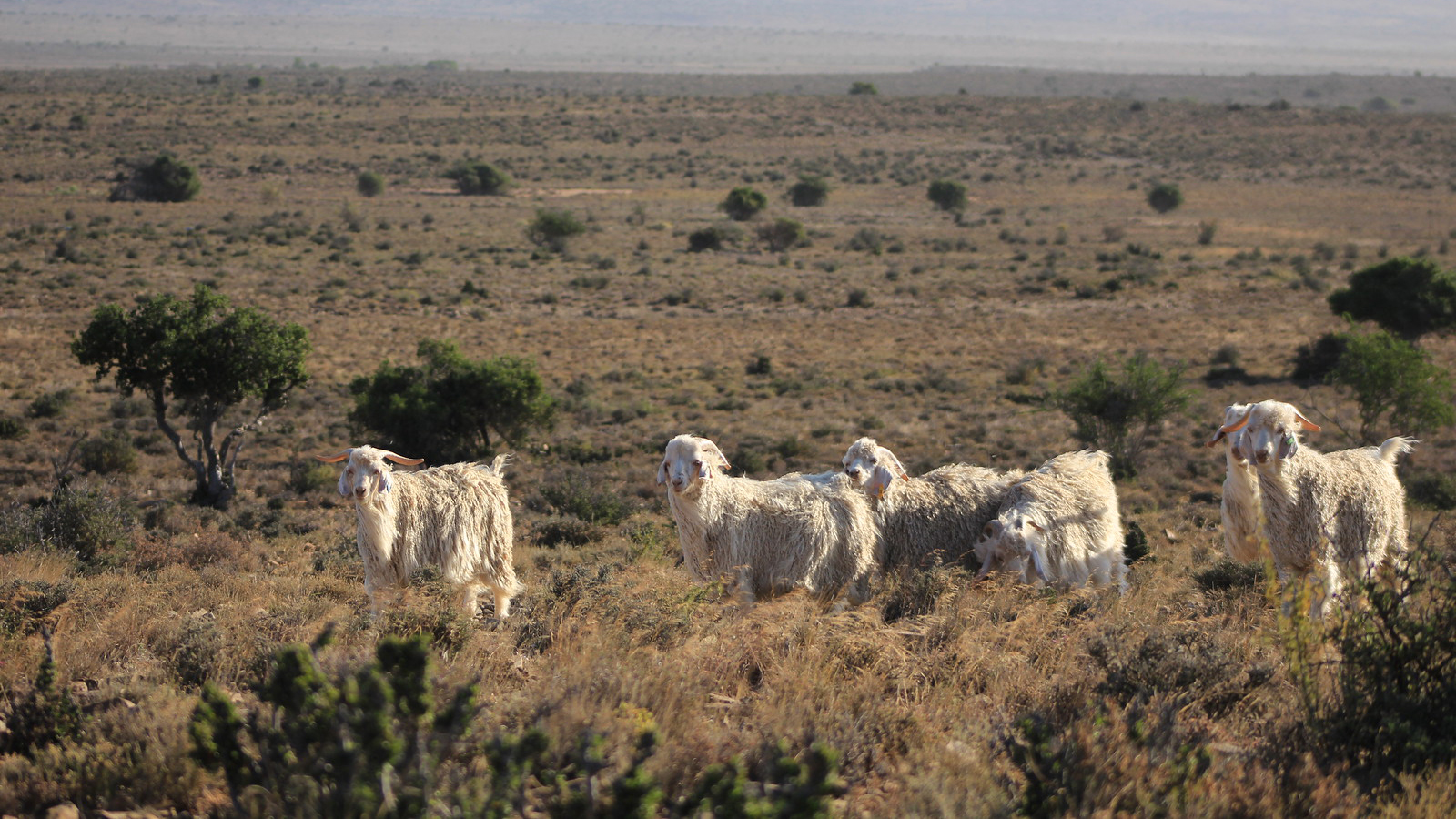
Lightweight and durable, water-repellent and simultaneously moisture-absorbent, cooling in summer and warming in winter: mohair is one of the world’s most valuable textile fibres. The fine material comes from the long, curly white fleece of Angora goats, now mainly farmed in South Africa. But from the viewpoint of animal rights, mohair is highly controversial: An exposé published by PETA in 2018 showed sheared-off strips of skin, castrations and other medical interventions performed without anaesthetic, and live animals dipped in toxic chemicals. In order to ensure that such practices are consigned to the past and, in addition, that the land on which the goats graze is sustainably farmed, in March 2020 the nonprofit organisation Textile Exchange introduced the Responsible Mohair Standard (RMS).
From the farmer to fibre production and the finished product: In order to meet the requirements of the RMS, all the processing steps in the fibre production process must be certified. The aim of the new standard is to boost the profile of farmers who adopt the most responsible practices as regards animal welfare and sustainability – an aim met by regular audits of the farms and tracking the materials to the end products. To receive the certification, farmers must implement progressive land management approaches and treat their goats humanely. The RMS guidelines draw on the Five Freedoms outlined by the UK Farm Animal Welfare Council in 1979, which include freedom from hunger, thirst and any kind of physical pain or distress. “The RMS helps everyone to identify room for improvement on their farms and in their business. It also helps to provide farmers some peace of mind as to where they are up to standard, and even reassures them of areas where they excel,” says Marx Strydom, a mohair producer from the Jansenville region of South Africa.
In addition, the Responsible Wool Standard (RWS) introduced in 2016 has been revised. Numerous brands, among them Eileen Fisher, H&M and Patagonia, are already buyers of the renowned RWS-certified wool. The revision covers clarification of the animal welfare and land management modules, including the introduction of additional requirements and guidelines around biodiversity. It also introduces a set of social welfare requirements.
#Mohair #Textile Exchange #Responsible Mohair Standard #RMS #RWS #Responsible Wool Standard #Wool #South Africa #Animal welfare #PETA #Sustainability
Further information:
- Textile Exchange (March 2020): New Responsible Mohair Standard and Updated Responsible Wool Standard
Photo: Mohair South Africa